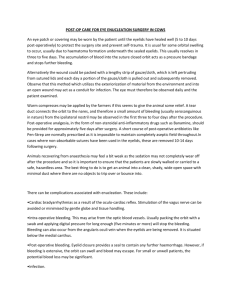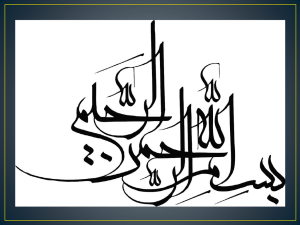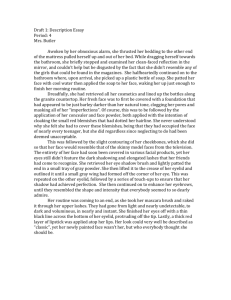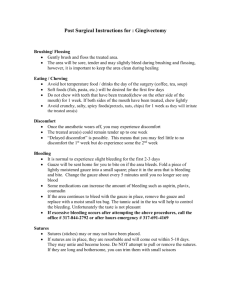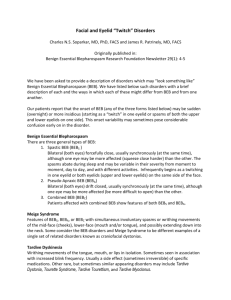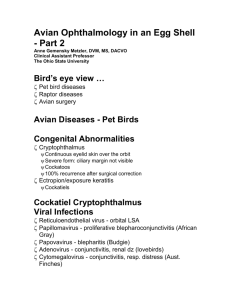Procedure for transpalpebral and subconjuntival enucleation
advertisement
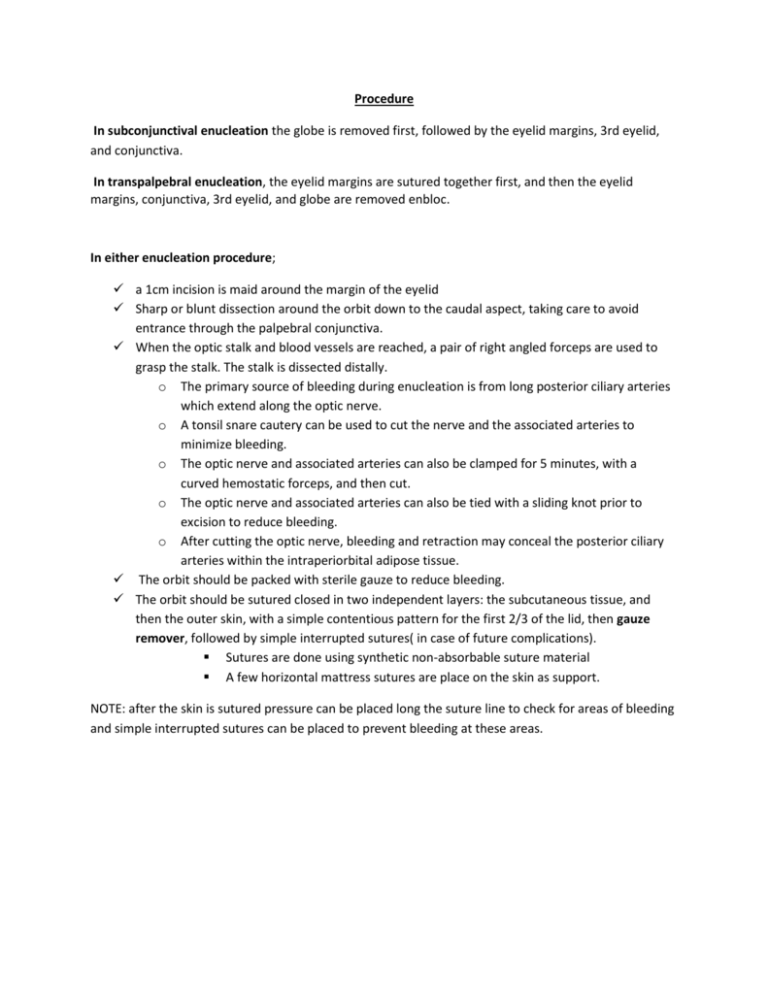
Procedure In subconjunctival enucleation the globe is removed first, followed by the eyelid margins, 3rd eyelid, and conjunctiva. In transpalpebral enucleation, the eyelid margins are sutured together first, and then the eyelid margins, conjunctiva, 3rd eyelid, and globe are removed enbloc. In either enucleation procedure; a 1cm incision is maid around the margin of the eyelid Sharp or blunt dissection around the orbit down to the caudal aspect, taking care to avoid entrance through the palpebral conjunctiva. When the optic stalk and blood vessels are reached, a pair of right angled forceps are used to grasp the stalk. The stalk is dissected distally. o The primary source of bleeding during enucleation is from long posterior ciliary arteries which extend along the optic nerve. o A tonsil snare cautery can be used to cut the nerve and the associated arteries to minimize bleeding. o The optic nerve and associated arteries can also be clamped for 5 minutes, with a curved hemostatic forceps, and then cut. o The optic nerve and associated arteries can also be tied with a sliding knot prior to excision to reduce bleeding. o After cutting the optic nerve, bleeding and retraction may conceal the posterior ciliary arteries within the intraperiorbital adipose tissue. The orbit should be packed with sterile gauze to reduce bleeding. The orbit should be sutured closed in two independent layers: the subcutaneous tissue, and then the outer skin, with a simple contentious pattern for the first 2/3 of the lid, then gauze remover, followed by simple interrupted sutures( in case of future complications). Sutures are done using synthetic non-absorbable suture material A few horizontal mattress sutures are place on the skin as support. NOTE: after the skin is sutured pressure can be placed long the suture line to check for areas of bleeding and simple interrupted sutures can be placed to prevent bleeding at these areas.
